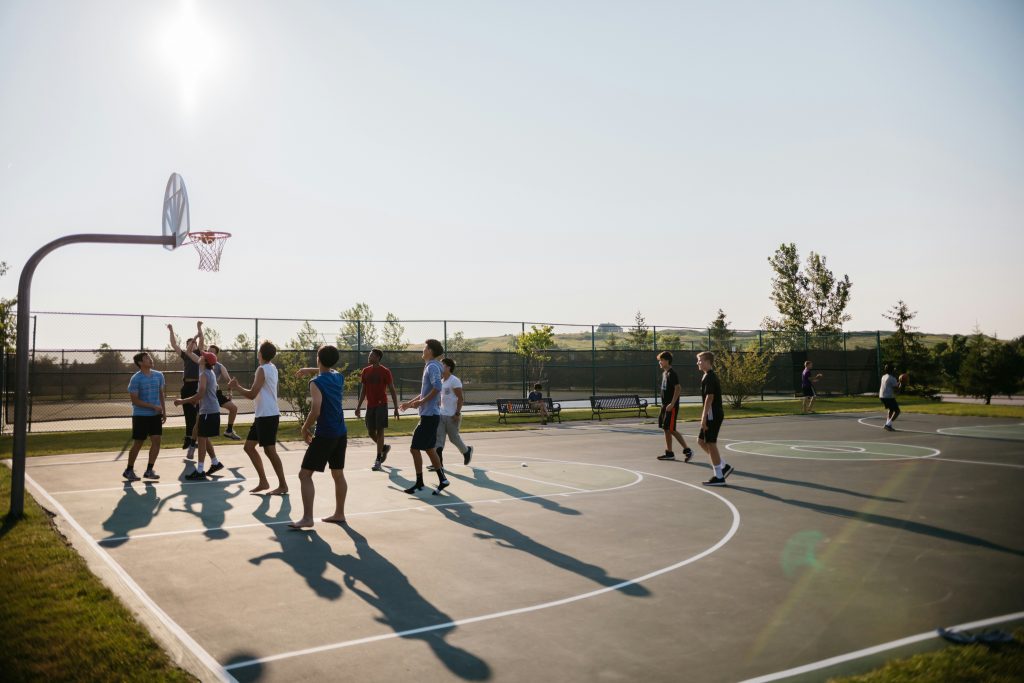Suicide is an alarming public health crisis that inflicts profound emotional pain on families, friends, and communities around the globe. According to the World Health Organization (2024), approximately 720,000 individuals lose their lives to suicide each year, marking it as the third leading cause of death among those aged 15 to 29, with variations in statistics across different nations. Males and young individuals who face various forms of discrimination and marginalization—including refugees, First Nations peoples, incarcerated youth, and members of the LGBTQIA+ community—exhibit notably elevated suicide rates (World Health Organization, 2024). This highlights the urgent need for comprehensive strategies to address this pressing concern.
Despite the tragic frequency of suicide, it is crucial to understand that many instances are preventable. The development of evidence-informed prevention and early intervention strategies is essential to significantly reduce the number of lives lost to suicide. Implementing these strategies effectively can lead to a positive impact on countless individuals who may be struggling.
Research by Welty and colleagues (2024) indicates that current interventions aimed at preventing suicide among adolescents often concentrate on individual risk factors, such as depression. However, this focus can overlook adolescents who may appear to be at low-to-moderate risk but are actually facing a heightened risk of suicide. The authors point out that many existing approaches are costly and lack robust evidence regarding their effectiveness in reducing suicide rates. They propose a shift towards targeting community-level protective factors, particularly fostering a sense of connection among individuals, while employing a societal approach that considers relationships within broader systems like family, school, and community. This area remains crucial yet underexplored in the landscape of adolescent suicide prevention.
In their systematic review, Welty and colleagues (2024) centered their research on the notion of “school connectedness” as a potentially modifiable protective factor against suicidality, which encompasses thoughts, plans, and attempts related to suicide. School connectedness involves the emotional and psychological ties students have to their educational environment, including feelings of belonging, the quality of relationships with teachers and peers, and overall engagement in learning experiences. Evidence suggests that a strong sense of school connectedness correlates with improved wellbeing, mental health, and academic success, while also serving as a protective factor against depression and anxiety (Hodges et al., 2018; García-Moya et al., 2019; Aldridge & McChesney, 2018; Raniti et al., 2022; Rose et al., 2024; Wang & Degol, 2016).
In their systematic review, the authors investigated the protective effects of school connectedness against suicidality among high school students. They also explored whether this relationship was influenced by known risk factors for suicide in adolescents, including depression, anxiety, impulsivity, sleep patterns, substance use (both non-vaped and vaping), as well as demographic variables such as gender, ethnicity, and age.

Could a feeling of connection with school reduce or prevent suicide in adolescents?
Research Methodology for Examining School Connectedness and Its Impact
The research team conducted a thorough search of multiple online databases, including PubMed, EMBASE, CINAHL, and PsycINFO, in December 2021. They focused on observational studies (like cohort, case-control, and cross-sectional studies) as well as experimental studies that investigated the impact of school connectedness (the exposure) on various aspects of suicidality (the outcomes) among high school students. To be included, studies had to be published in English and measure at least one dimension of school connectedness, such as social affiliations, feelings of school belonging, perceptions about the significance of school, or supportive learning environments. Notably, there were no restrictions concerning the publication date of the studies considered.
Adhering to established protocols for systematic reviews, the authors ensured that at least 50% of the identified articles were screened by two independent reviewers, and they extracted relevant data according to pre-defined categories. The quality of the included studies was evaluated for potential bias using the Newcastle-Ottawa Scale (NOS) tailored for non-randomized studies. The results were then synthesized using a narrative approach.
Key Findings from the Systematic Review on School Connectedness
Overview of Study Characteristics and Inclusion Criteria
From an initial pool of 871 articles, 34 studies met the specified inclusion criteria for the systematic review. Notably, 27 of these studies were cross-sectional, while 7 were longitudinal, indicating a diverse range of research designs. However, no experimental or intervention studies were included. The majority of the studies concentrated on suicidal ideation, with 30 studies addressing this aspect, while 22 studies focused on suicide attempts, and only 2 examined plans for suicide. It is worth noting that 20 studies assessed suicidality within the past year, while just five studies looked at lifetime suicidality. Most included studies were conducted in high-income countries, particularly in the United States.
The quality assessment of the included studies revealed a mixed landscape. While 14 studies were rated as “high quality” (indicating a low risk of bias), 20 studies were categorized as having a “high” risk of bias, and none received a “very high” risk rating. The authors observed that a higher risk of bias was often linked to studies reliant on self-reported outcomes and those that did not adequately justify their sample sizes. Furthermore, the review identified a common shortcoming where studies did not control for confounding variables such as sleep patterns, impulsivity, substance use, or depression in their statistical analyses.
Insights on the Relationship Between School Connectedness and Suicidality
The findings regarding the influence of school connectedness on suicidality exhibited variability and were contingent upon the specific outcome being investigated:
- Among studies focusing on suicidal ideation, 73% found that school connectedness served as a protective factor.
- For studies assessing suicide attempts, 50% indicated that school connectedness offered protection against such attempts.
- Out of the 20 studies published in the last five years, 11 (55%) established a protective association between school connectedness and suicidality.
- Interestingly, none of the studies explored potential moderators affecting the relationship between school connectedness and suicidality.

School connectedness was linked to less suicidal ideation in high school students.
Conclusions from the Review of School Connectedness and Suicidality
The analysis of the systematic review culminated in a comprehensive understanding of how school connectedness relates to suicidality through a narrative synthesis of 34 published studies. The authors emphasized that while school connectedness can act as a protective factor against suicidality, particularly concerning suicidal ideation, its influence on suicide attempts is less pronounced.
To elucidate this finding, the authors referenced the Interpersonal Theory of Suicide, which posits that “a lack of belongingness and feelings of burdensomeness may lead to passive suicidal ideation,” while “actual suicide attempts necessitate an acquired capability for suicide.” This theory suggests that while diminished school connectedness correlates with feelings of isolation, it may not necessarily impact the development of the capability to attempt suicide. Thus, fostering a sense of belonging within school environments may help mitigate suicidal ideation, but it is unlikely to affect the actual execution of suicide attempts.

School systems play an important role in suicide prevention for adolescents.
Strengths and Limitations of the Systematic Review
This systematic review presents several notable strengths. By employing a holistic, socio-ecological framework for examining the prevention and early intervention of suicidality among adolescents, the study broadens the existing evidence that typically focuses on individualized risk and protective factors (such as poor sleep) to encompass the wider systems influencing adolescents’ lives, including educational settings. This is vital given that the complex risk factors for suicide comprise both individual vulnerabilities (e.g., history of suicide attempts or mental disorders) and broader social determinants, such as exposure to adverse life events (e.g., abuse, natural disasters) and social or cultural disadvantages (Beautrais, 2000).
Moreover, the comprehensive approach to article selection, which utilized a broad definition of school connectedness and imposed no publication date restrictions, enhances the review’s inclusivity. This indicates that a considerable number of available studies examining the intersection of school connectedness and suicidality, particularly those published in English, were effectively captured in this review.
However, the authors also acknowledge certain limitations in the evidence presented in this review. Most of the included studies were observational in nature, with a significant proportion being cross-sectional, which constrains any causal inferences that could be drawn (a requirement for prospective data). Additionally, the review exclusively included studies published in English, and with the exception of one study from Vietnam, all others were conducted in high-income countries. This restricts the generalizability of the findings to low- and middle-income nations, where the majority of suicides occur throughout an individual’s life span (World Health Organization, 2024).
Additionally, while this review encompassed studies involving high school students, the specific ages of participants were not disclosed. Since “high school” corresponds to varying age ranges globally, the representativeness of the findings for different age groups of adolescents remains unclear. Furthermore, although seven longitudinal studies were included, it is unclear whether these employed retrospective or prospective data. Lastly, the absence of reported effect sizes is a critical omission that would aid in evaluating the strength of the current evidence base. The authors also recognize that a prior systematic review and meta-analysis on the same topic was conducted in 2017 (Marraccini and Brier, 2017). While the current review improves on certain aspects of the previous review, such as enhancing the theoretical framework and examining additional covariates, it remains ambiguous why a meta-analysis was not performed in this instance.

We need more prospective data and studies from low- and middle-income countries examining the effect of school connectedness on suicidality.
Practical Implications for Enhancing School Connectedness
- The findings from this review underscore the crucial role that school socio-emotional environments play in fostering student wellbeing.
- Should these findings be validated by prospective evidence, including intervention studies, enhancing school connectedness could significantly diminish suicidal ideation among adolescents.
- Given the established links between school connectedness and various health outcomes, including mental and physical health and academic success, strategies aimed at improving this aspect of school life (e.g., fostering teacher-student relationships characterized by fairness, empathy, and support; Allen et al., 2018) could represent a valuable investment for schools, addressing multiple student challenges simultaneously. For instance, an initiative designed to bolster school connectedness may simultaneously yield improvements in both mental and physical health, thereby reducing the necessity for separate interventions targeting these areas.

Fostering a supportive and inclusive social-emotional environment in schools is important for student wellbeing.
Disclosure of Interests Related to the Study
Dr. Monika Raniti and Dr. Jennifer Dam did not participate in the Welty et al. (2024) review or in any of the studies included in it. Both Dr. Raniti and Dr. Dam receive support from the Centre of Research Excellence in Driving Global Investment in Adolescent Health (NHMRC GNT1171981). Additionally, Dr. Monika Raniti is supported by the ALIVE National Centre for Mental Health Research Translation (NHMRC Special Initiative in Mental Health Grant GNT2002047) and has previously obtained funding from the Wellcome Trust to study the role of school connectedness in youth depression and anxiety.
Essential References and Further Reading
Primary Research Article
Welty CW, Bingham L, Morales M, Gerald LB, Ellingson KD, & Haynes PL. (2024). School connectedness and suicide among high school youth: a systematic review. Journal of School Health. 2024;94(5):469-480. doi: 10.1111/josh.13445
Additional Relevant Studies
Aldridge JM, McChesney K. The relationships between school climate and adolescent mental health and wellbeing: A systematic literature review. International Journal of Education Research. 2018;88:121–45.
Allen K, Kern ML, Vella-Brodrick D, Hattie J, Waters L. What schools need to know about fostering school belonging: A meta-analysis. Educational psychology review. 2018;30:1-34.
Australian Institute for Health and Welfare. (2023). Deaths by suicide among young people.
Barrass, L. (2024). Risk and recovery factors in male suicide: is society failing men? The Mental Elf, January 2024.
Beautrais, A. L. Risk factors for suicide and attempted suicide among young people. Australian & New Zealand Journal of Psychiatry. 2000;34(3):420-436.
García-Moya I, Bunn F, Jiménez-Iglesias A, Paniagua C, Brooks FM. The conceptualisation of school and teacher connectedness in adolescent research: a scoping review of literature. Educational Review. 2019;71(4):423-444.
Hodges A, Cordier R, Joosten A, Bourke-Taylor H, Speyer R. Evaluating the psychometric quality of school connectedness measures: A systematic review. PloS one. 2018;13(9):e0203373.
Lawson, K. (2024). Suicide prevention: expanding the narrative to preventing the crisis, not just treating the crisis. The Mental Elf, November 2024.
Mackay, L. (2023). Sexual minorities, suicide and self-harm: new research in England deepens our understanding. The Mental Elf, September 2023.
Marraccini ME, Brier ZM. School connectedness and suicidal thoughts and behaviors: A systematic meta-analysis. School psychology quarterly. 2017;32(1):5.
Raniti, M. & Rakesh, D. (2022). School connectedness, anxiety and depression: recent evidence and young people’s perspectives #ActiveIngredientsMH. The Mental Elf, February 2022.
Raniti M, Rakesh D, Patton GC, Sawyer SM. The role of school connectedness in the prevention of youth depression and anxiety: a systematic review with youth consultation. BMC Public Health. 2022; 25;22(1):2152.
Roberts, T. (2019). Suicide and mental illness in low- and middle-income countries. The Mental Elf, October 2019.
Rose ID, Lesesne CA, Sun J, Johns MM, Zhang X, Hertz M. The relationship of school connectedness to adolescents’ engagement in co-occurring health risks: A meta-analytic review. The Journal of School Nursing. 2024;40(1):58-73.
Suicide Prevention Australia. (2021). Fact sheet: Youth Suicide. 2021.
Wang M-T, Degol JL. School climate: A review of the construct, measurement, and impact on student outcomes. Educational Psychology Review. 2016;28(2):315–52.
World Health Organization. (2024, August 29). Suicide.













